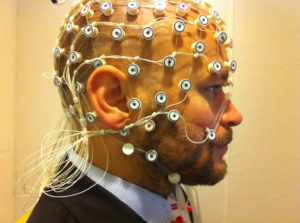
Simultaneous interpretation is a process in which the interpreter hears one language and speaks the words of the second language in real time. It’s not an easy task, to say the least. In fact, even among people who know two languages well, it’s a gift that few possess. This talent boils down to a set of highly specialized skills, a way of managing mental resources, and a range of coping strategies that are needed for this extremely difficult process. A recent research study looked specifically at working memory load and how it affects SI.
The Setup
Nine university-trained professional simultaneous interpreters were asked to interpret eight speeches from a UN Security Council Meeting. As they did it, their brain activity was recorded using continuous EEG. The data from the EEG was then analyzed to find out how working memory load affected the interpretation.
The Findings
The study tested two hypotheses. First, it aimed to test the Efforts Model of SI, which says that simultaneous interpretation involves three types of mental functions: listening, production, and memory. The study’s authors specifically wanted to find out if increased processing demands detracted from the interpreter’s capacity to listen.
They looked at the number of content words, content words by frequency, and all words by their syllable length. This was a good indication of the difficulty of each task for two reasons. First, functional words like “and” are much easier to interpret than content words. Second, a word with more syllables gives the interpreter more time to process that meaning. That is, longer words are less dense in meaning.
Simultaneous interpretation is one of the most extreme cases of multi-tasking. And, since multi-tasking typically reduces the amount of attention you can pay to each individual task, how can interpreters manage the most difficult interpretations? What the researchers found was that the interpreter’s brain temporarily stopped processing auditory information to manage the working memory overload when needed, seamlessly moving back into listening mode when the backlog was cleared.
The second question they wanted to address was related to a survey taken by simultaneous interpreters. The interpreters said that it was more difficult to convert from the second language into the first language. So, the researchers looked at the data to find out if the working memory load was different depending on the direction of the interpretation.
The results showed only a small difference in the overall effect. Yes, the working memory load is smaller when converting from the second language to the first. But the brain seems to compensate when the interpretation is from the first language to the second by keeping fewer of the second language words in its working memory.
Simultaneous interpretation is a truly remarkable feat. Researchers still have a lot to learn about how certain people accomplish it. The good news is that the more they know, the more they will understand about what can be done to make it easier and more reliable.

Recent Comments